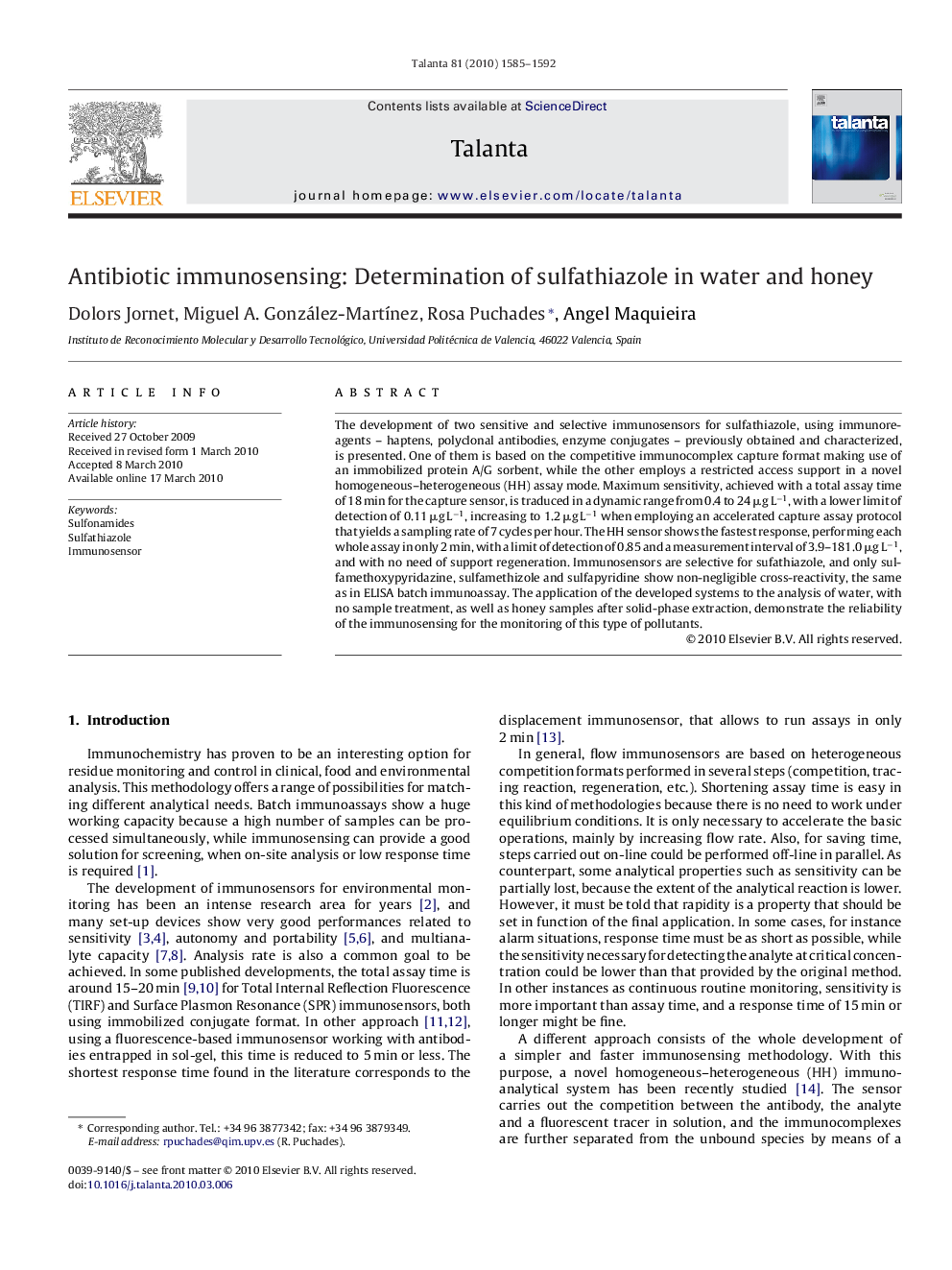| Article ID | Journal | Published Year | Pages | File Type |
|---|---|---|---|---|
| 1242674 | Talanta | 2010 | 8 Pages |
The development of two sensitive and selective immunosensors for sulfathiazole, using immunoreagents – haptens, polyclonal antibodies, enzyme conjugates – previously obtained and characterized, is presented. One of them is based on the competitive immunocomplex capture format making use of an immobilized protein A/G sorbent, while the other employs a restricted access support in a novel homogeneous–heterogeneous (HH) assay mode. Maximum sensitivity, achieved with a total assay time of 18 min for the capture sensor, is traduced in a dynamic range from 0.4 to 24 μg L−1, with a lower limit of detection of 0.11 μg L−1, increasing to 1.2 μg L−1 when employing an accelerated capture assay protocol that yields a sampling rate of 7 cycles per hour. The HH sensor shows the fastest response, performing each whole assay in only 2 min, with a limit of detection of 0.85 and a measurement interval of 3.9–181.0 μg L−1, and with no need of support regeneration. Immunosensors are selective for sufathiazole, and only sulfamethoxypyridazine, sulfamethizole and sulfapyridine show non-negligible cross-reactivity, the same as in ELISA batch immunoassay. The application of the developed systems to the analysis of water, with no sample treatment, as well as honey samples after solid-phase extraction, demonstrate the reliability of the immunosensing for the monitoring of this type of pollutants.
